Few things are more frustrating than waking up and seeing all your flowers and plants have been chomped on or completely devoured overnight. Deer are known to eat entire flower patches, destroy shrubs, and just cause general mayhem in the garden. If you've got a large deer population around you, it is wise to invest in some deer-resistant perennials.
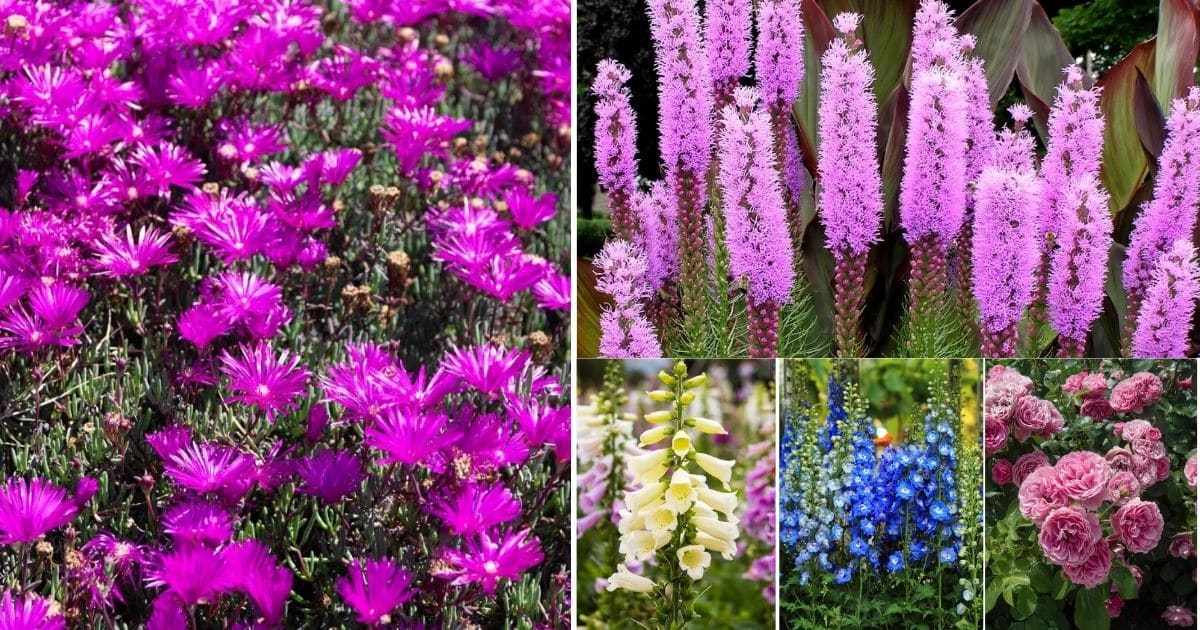
Jump to:
- Can I Really Keep Deer Away From The Garden?
- How Do I Keep Deer Away From The Garden?
- Deer-Resistant Perennial Flowers
- Delphinium (Larkspur)
- Coneflower (Echinacea)
- Butterfly Weed (Asclepias tuberosa)
- Columbine (Aquilegia)
- Lavender
- Foxglove (Digitalis)
- Red Valerian (Centranthus)
- Ice Plant (Delosperma)
- Blazing Star (Liatris)
- Yarrow (Achillea)
- Scarlet Monardella (Coyote Mint, Hummingbird Monardella)
- Peony (Paeonia)
- Hummingbird Mint (Agastache)
- Bleeding Heart – Common, Pacific & Fringed (Dicentra sp.)
- Rodgers Flower
- Dusty Miller (Jacobaea maritima)
- Leopard Plant (Ligularia)
- Goatsbeard (Aruncus)
- Foamflower (Tiarella)
- Deer Resistant Perennial Herbs
- Oregano (Origanum)
- Mint & Catmint
- Rosemary
- Sage
- Thyme
- Deer Resistant Perennial Shrubs
- Butterfly Bush (Buddleia)
- Lilac
- Boxwood (Buxus)
- Arrowwood Viburnum (Viburnum dentatum)
- Salvia & Russian Sage
- Shrub Roses (Rosa)
- Bayberry (Myrica pensylvanica)
Can I Really Keep Deer Away From The Garden?
The truth is, there are no plants, except cactus and other seriously prickly plants that are deer-proof. If there is a large enough deer herd, they'll eat everything, including the deer-resistant plants. However, planting these deer-resistant perennials does help if the deer have other options for food. Deer-resistant plants are less palatable and will be way down on their menu choice. The label deer-resistant simply means that deer are less likely to eat the plant, not that they will avoid it entirely. There is no such thing as entirely deer-proof plants or gardens, unfortunately.
If you've got large deer herds around, or if they're struggling to find food sources, you may want to consider installing electric fencing or using natural, organic deer repellent spray.
A Deer's Palate: What They Like & Don't Like
The key to keeping deer out of the garden is understanding what they like to eat. It would be terrible to plant a deer buffet unintentionally. Although, the deer would be pretty pleased!
Deer enjoy narrow-leafed evergreens, like firs, and plants with smooth leaves. They also like some of the super popular landscape plants, like daylilies, hostas, and English Ivy.
Deer don't like strongly fragrant plants, like herbs and flowers with powerful scents. Sage, lavender, and mint will deter deer, as will irises, lilacs, and peonies, due to their robust aroma. Poisonous plants, like Foxglove and daffodils, are also safe from deer; they know not to eat the poisonous ones. Deer also avoid plants with fuzzy leaves, spiny stems, and coarse textures.
How Do I Keep Deer Away From The Garden?
To successfully plant a deer-resistant garden, you need to outwit the deer. Deer aren't bad creatures; they're just hungry and will eat whatever is available to them. Deer, like most animals, will also choose the most accessible options. If you've got choice hostas as border plants, they're going to be eaten, without question.
To outwit opportunistic deer, you need to create a garden or yard that is less attractive to them. Some ways to do this are creating borders of less palatable plants around the choice of edibles, intermixing strongly fragrant plants to throw the deer off, and making it generally difficult for them to browse.
Keep in mind, though, that deer are curious animals. They are likely to give any plant a try at least once, just to see. If you notice a few bites out of a plant, don't freak out right away. It's only a problem if the deer develop a taste for the foliage and eat the whole thing.
Deer-Resistant Perennial Flowers
Delphinium (Larkspur)

Bright and bold Delphinium is a classic garden plant not just because it is beautiful; it's also toxic to deer, so it never gets bothered. The exquisite and elegant Delphinium blooms which grow along tall spikes are quite the summer display. They look incredibly stunning as a border plant or framing a walkway. Dwarf varieties are available, but we prefer the statuesque originals, even though they commonly need staking.
Coneflower (Echinacea)
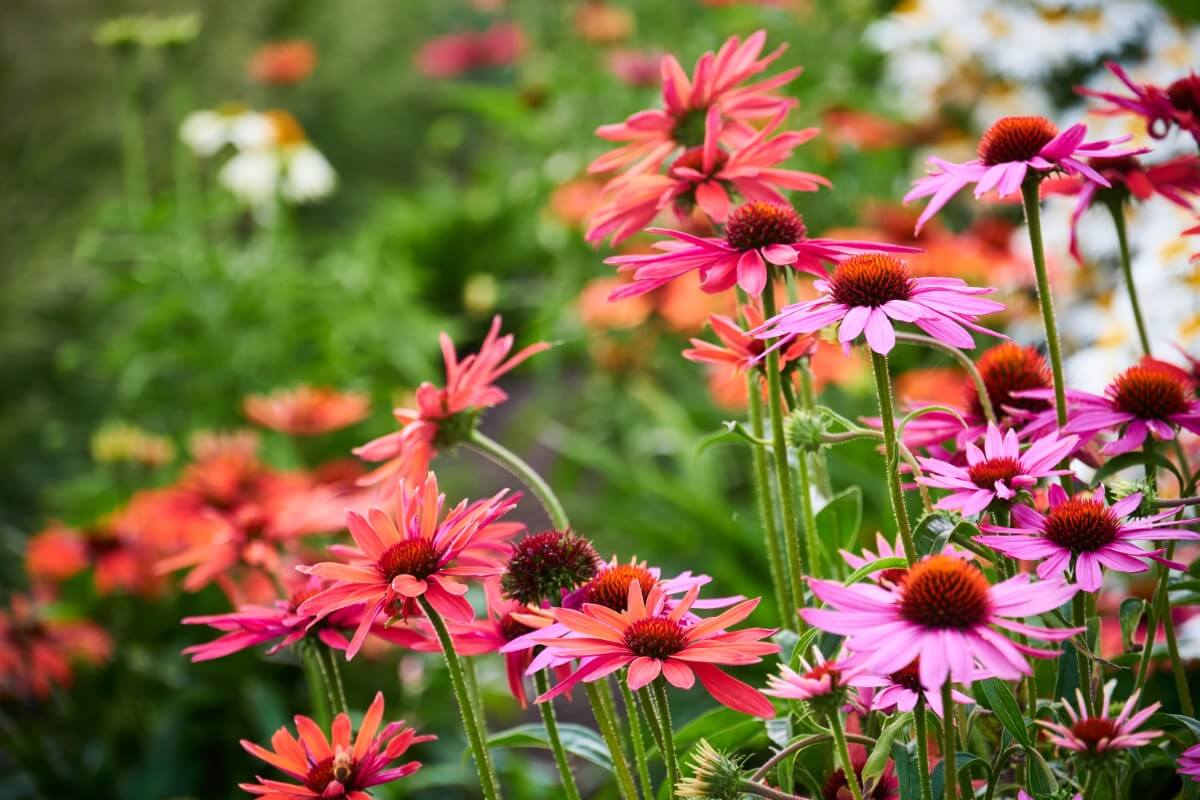
We love the bright purple Echinacea flowers, but deer don't enjoy the aroma they give off or their spiny center. That gives us another reason to appreciate the vibrancy of this native flower. Echinacea is an important pollinator flower for bumblebees, native bees, butterflies, and birds. To add to its appeal, Echinacea is easy to grow and drought-tolerant.
Butterfly Weed (Asclepias tuberosa)
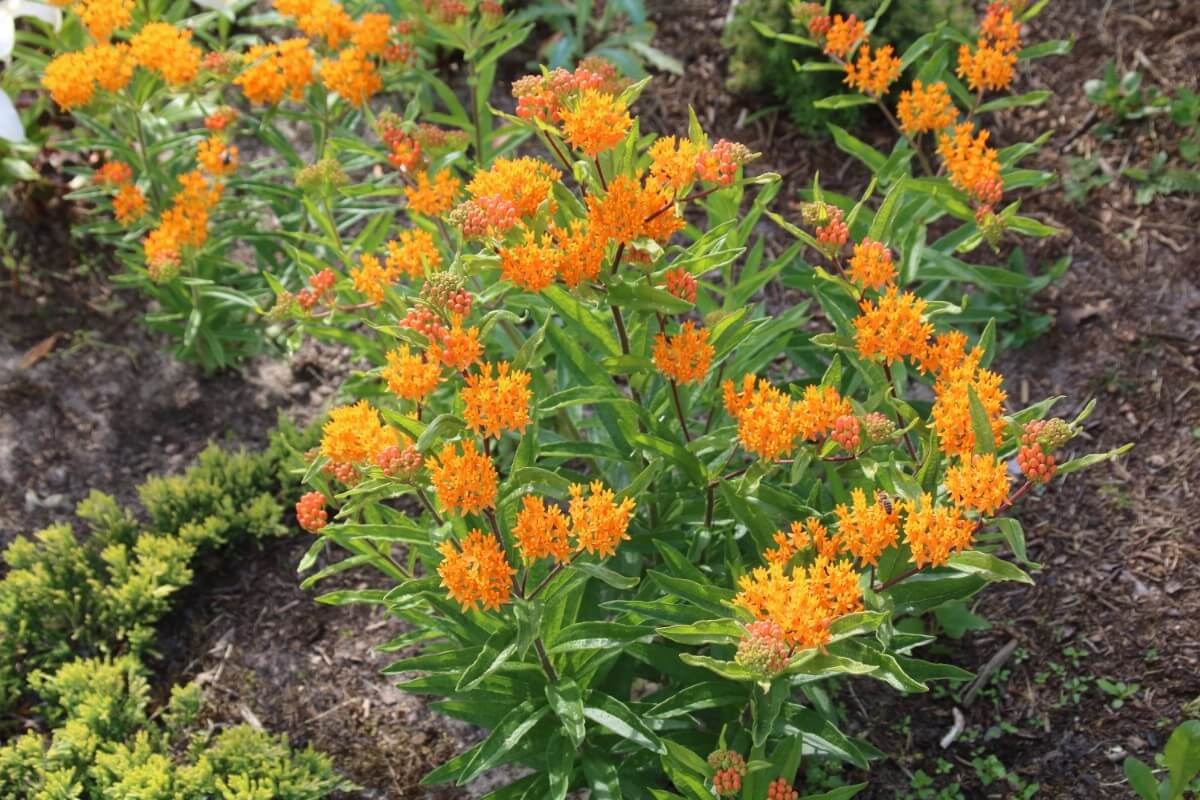
This native milkweed produces a sticky, milky sap that deer do not like one bit. Butterfly weed is unpalatable to deer, but butterflies love it. Monarch butterflies depend on Butterfly Weed to host their caterpillars, so it's important to plant this one. The brilliantly colored flowers of Butterfly Weed also attract other pollinators, like bees and hummingbirds. All varieties of milkweed are suitable to grow to benefit pollinators and keep deer at bay.
Columbine (Aquilegia)

The uniquely shaped flowers of Wild Columbine bring bees, butterflies, and hummingbirds calling, but not deer because the leaves are poisonous. Many butterflies and moths rely on Columbine as food for their larvae; the toxic leaves don't affect them at all. Columbine plants add a delicate, sweet feature to the garden with their downward-facing lantern-like flowers and deeply lobed green foliage.
Lavender

In addition to the strong scent, lavender also has fuzzy leaves that are not palatable to deer. Lavender blooms for a long time, which means the scent will work a long time to keep the deer away. Besides being a beautiful, fragrant, long-blooming plant, lavender is drought-resistant and easy to grow. It is a must for any garden, deer or not.
Foxglove (Digitalis)
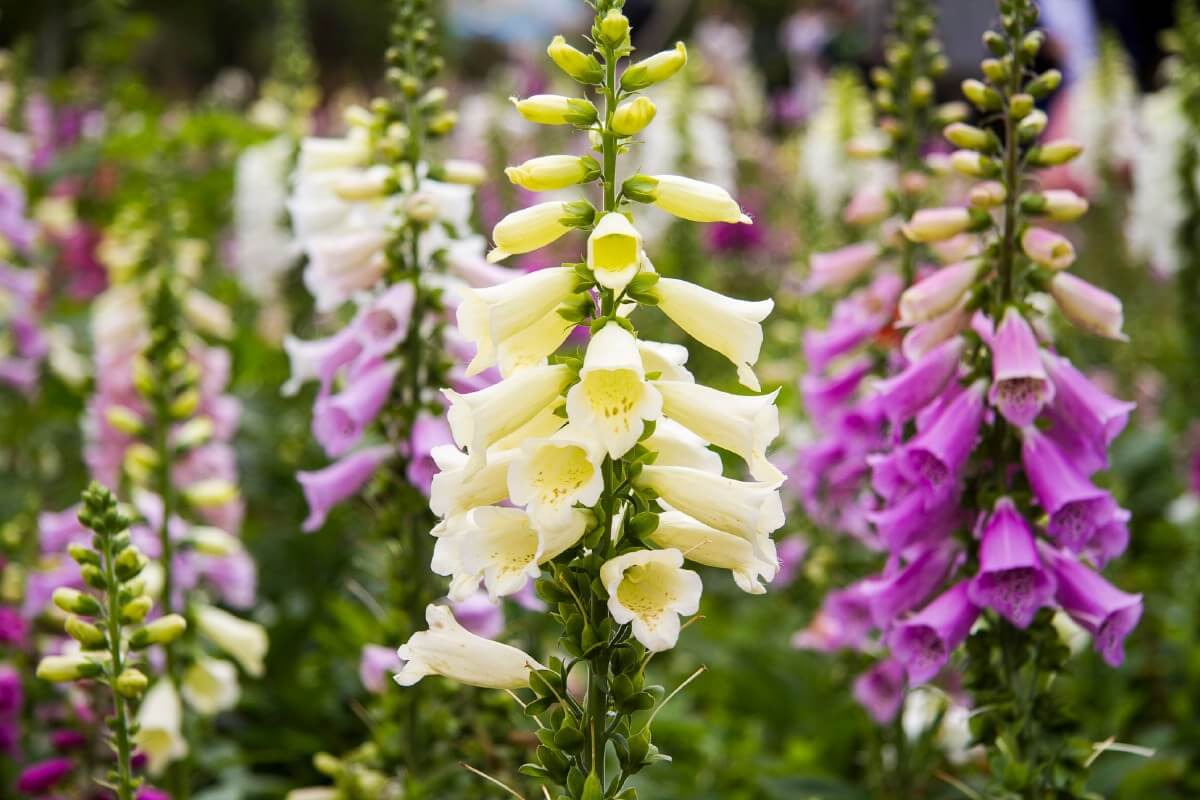
Deer know to stay away from Foxglove because it is poisonous. Plant Foxglove as a border or along a fence, and the tall spikes of bright, stunning flowers will keep the deer away. Hummingbirds adore the long tubular flowers, and we love the brilliant blooming display.
Red Valerian (Centranthus)
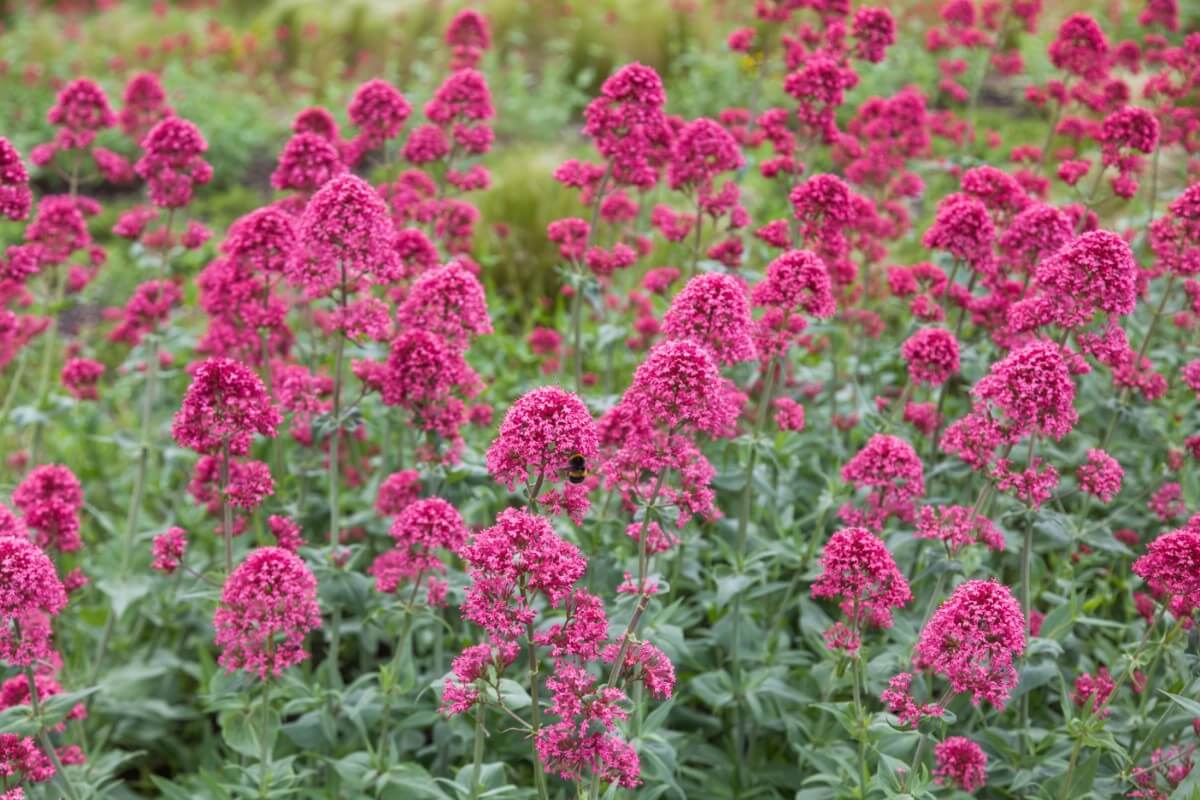
The dark red flower clusters of Red Valerian are stunning, rising up from the deep green foliage. Attractive to butterflies and people, but not deer, Red Valerian is a beautiful border plant. Deer don't like the fragrant flowers and bitter-tasting foliage and generally avoid it. This is an ideal landscape plant because it almost thrives on neglect; it is drought-resistant and blooms for months. Butterflies love the flowers of this tall, showy perennial. Red Valerian self-seeds easily, so be cautious planting this one.
Ice Plant (Delosperma)
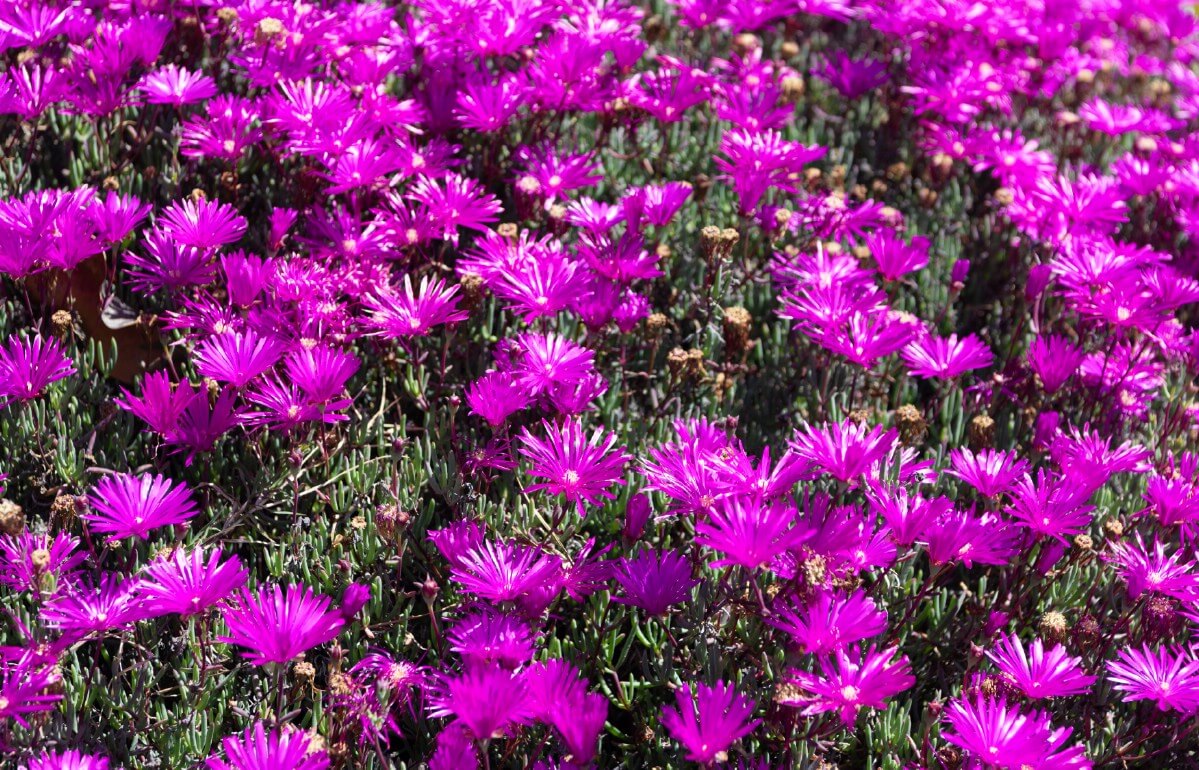
This low-growing carpet plant has leaves covered in hundreds of hairs, which deer abhor. Plus, since it's so low to the ground, it takes more work for the deer to reach. They'd much rather munch on something at eye level. These two factors make the Ice Plant safe from deer and the perfect perennial in any place with tons of destructive animals. Ice Plant flowers are stunning, small, and daisy-like in brilliant colors that appear above the low foliage like hundreds of fireworks. Blooming Ice Plants radiate upwards, creating a spectacle of color throughout the garden.
Blazing Star (Liatris)
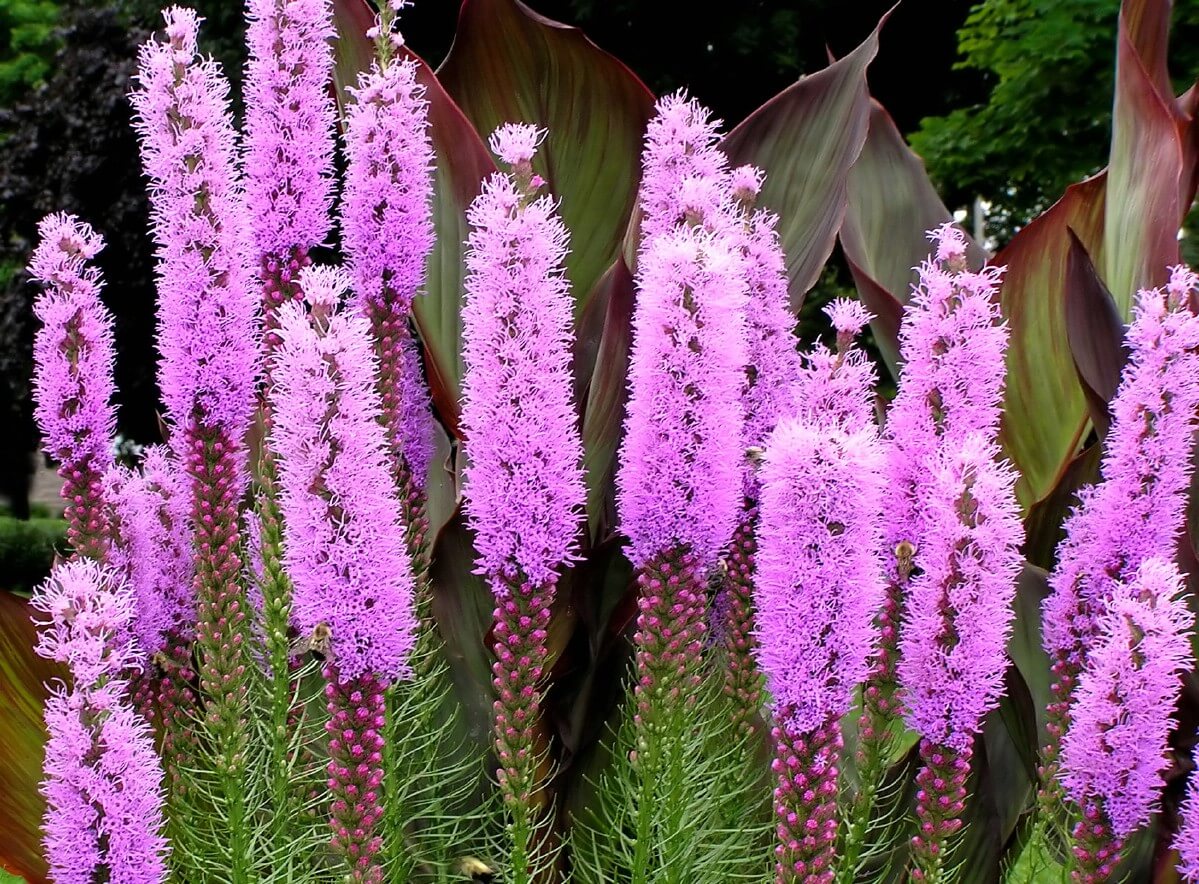
We can't get enough of the showy feathery flowers of Liatris, and thankfully don't have to worry about the deer eating them. Some Liatris types have hairy stems, but it's really the honey-sweet fragrance that keeps the deer away. The flowers on this perennial bloom for months, and hummingbirds love them. A native North American perennial flower, Liatris is the ideal plant for a pollinator garden.
Yarrow (Achillea)
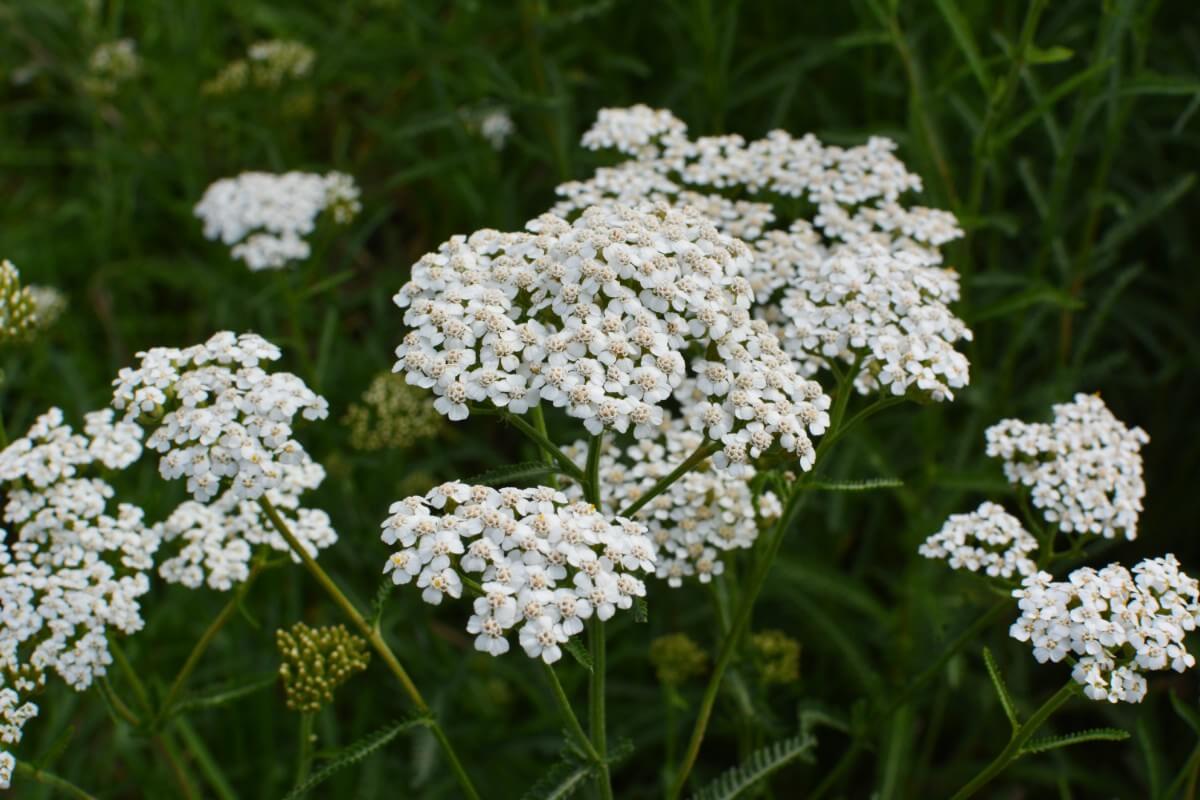
The fast-growing Yarrow plant has fuzzy bitter-tasting leaves and fragrant flowers that turn deer away. Some describe the fragrance as musky and reminiscent of onion or garlic. Yarrow produces massive, flat clusters of brilliantly colored flowers that are extremely attractive as a border or hedge plant. Butterflies and bees love the blooms, giving us another reason to plant lots of Yarrow. Mix Yarrow with other flowers that deer might enjoy, and the scent will have them keeping a wide berth around the whole area. Yarrow blooms last from early summer through fall, meaning their super deer-resisting powers last for a long time.
Scarlet Monardella (Coyote Mint, Hummingbird Monardella)
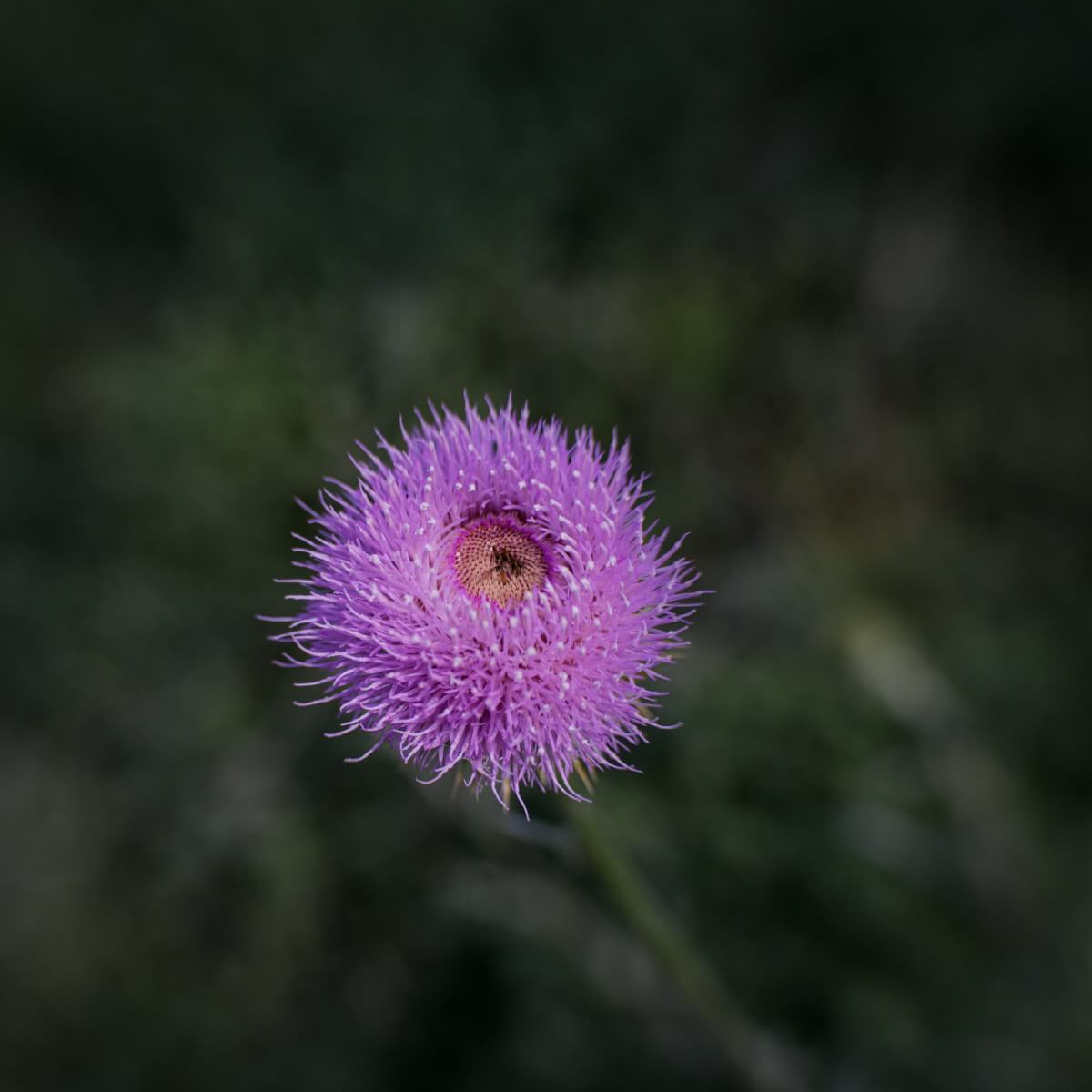
Deer highly dislike the fragrant leaves of Scarlet Monardella, but hummingbirds, bees, and butterflies love this plant, so grow lots of it! Scarlet Monardella is a low-growing shrub-like perennial with stunning bright-orange tubular flowers. We love the showy flowers of this native plant, especially how the tips of the flower burst outwards like a firecracker. In full bloom, it looks like the plant caught fire! Maybe that's also why the deer avoid it; it looks like flames.
Peony (Paeonia)

A well-known deer-resistant perennial, Peonies are actually rarely bothered by any garden pests. Their strong scent and flavor are distasteful to deer, making them an excellent landscape choice. Plus, these classic landscape perennials produce huge and beautiful blooms in a vast array of colors. There is definitely a Peony that suits your landscape.
Hummingbird Mint (Agastache)
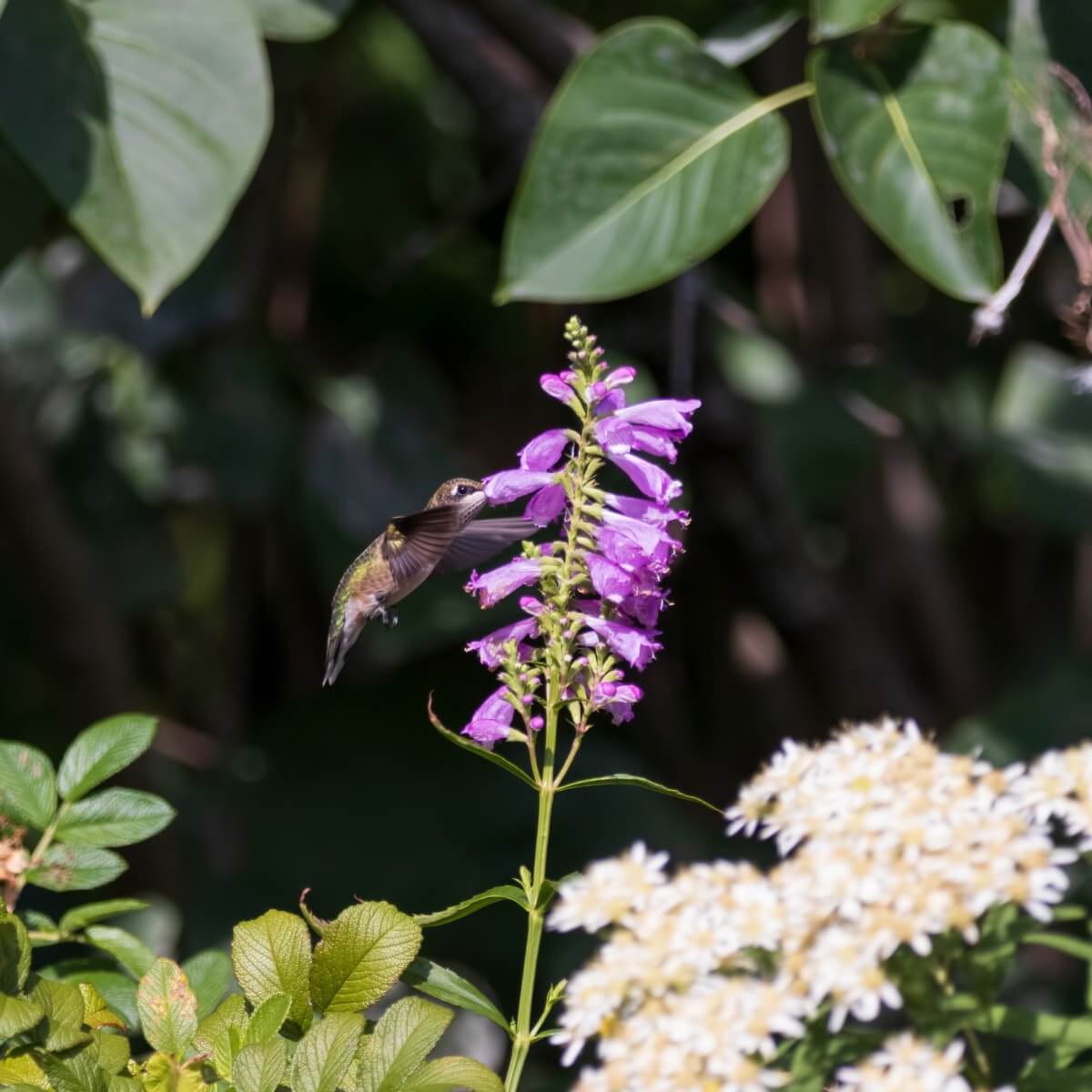
As the name suggests, Agastache plants are a member of the mint family. That wonderful mint scent isn't so wonderful to the deer, but the hummingbirds, bees, and butterflies adore it. Tall spikes of bluish-violet flowers are long-lasting, growing from spring to fall to make the pollinators happy and keep the deer away. Like other mints, this plant spreads fast, so it's best to keep it in containers or secluded from the main garden. Intersperse containers of Hummingbird Mint plants with flowers that the deer like as a deterrent.
Bleeding Heart – Common, Pacific & Fringed (Dicentra sp.)
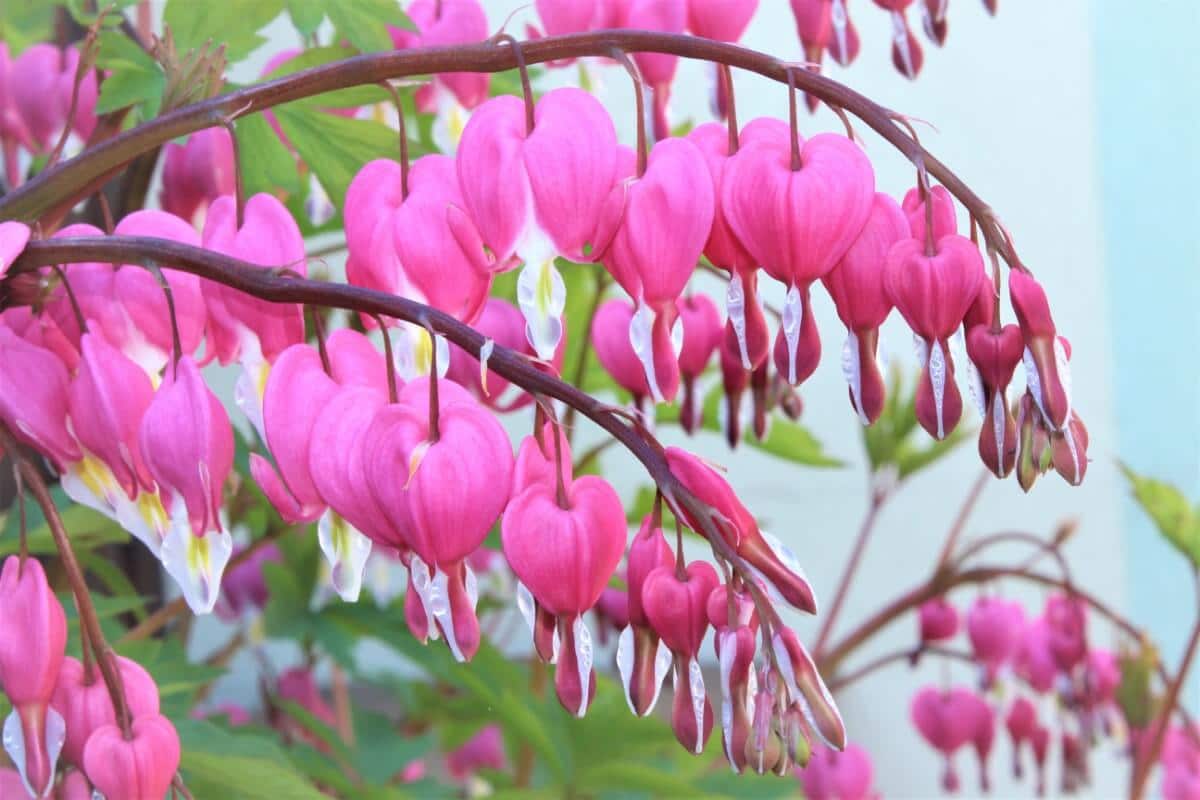
Bleeding Hearts are ideal landscape choices because they provide food for butterflies, bees, and hummingbirds, not deer. The plant is toxic to people and animals if eaten in large quantities, and the deer know not to chance it with this one. We prefer the Pacific and Fringed Bleeding Hearts because they are native to North America. The Common variety, which is most often grown in landscapes, originates from Asia.
Rodgers Flower

A tall, showy shade-loving plant with huge textured leaves, Rodgers Flower is a bold garden centerpiece. Deer hate those textured leaves, so you don't have to worry about protecting them. The huge prolific fluffy flower clusters are a sight to behold, and the butterflies agree. While the flowers are lovely, it is the massive mounding leaves that are the main attraction.
Dusty Miller (Jacobaea maritima)

A unique plant grown for its striking silvery, lacy foliage more than the flowers, Dusty Miller also has the added benefit of being deer-resistant. Deer don't appreciate the felt-like texture on the leaves and will leave it alone. Dusty Miller plants look amazing interspersed among taller shrubs and perennials or as a backdrop for brightly colored flowers. These plants can reach up to 2-feet tall, but there are dwarf varieties available too that look excellent as an edging plant.
Leopard Plant (Ligularia)
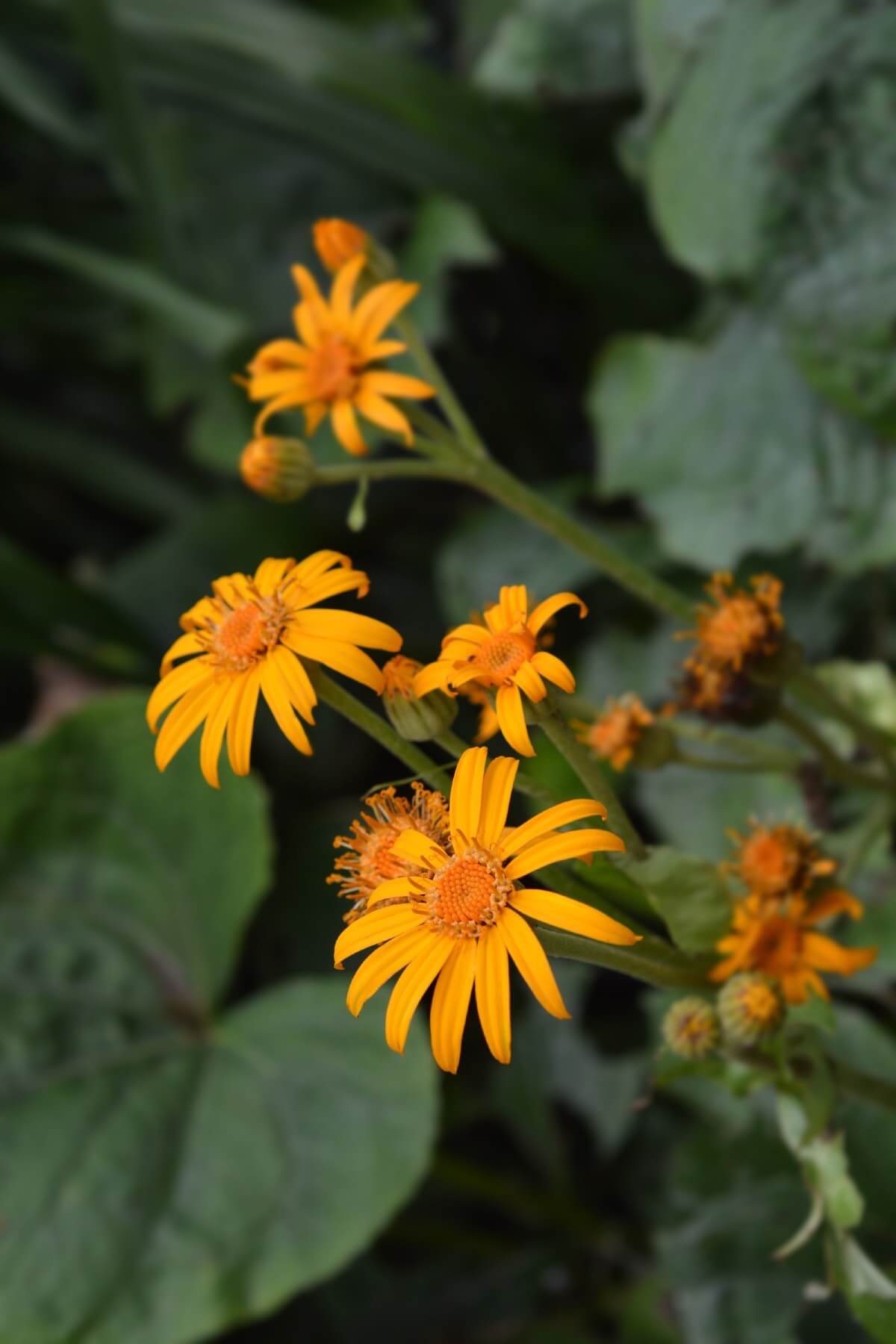
While we love the tall, colorful flower spires and huge leaves, the deer do not. The massive leaves of the Leopard Plant are leathery and textured, and not a delicacy for the deer, so they mostly avoid it. This shade-loving plant provides spectacular displays of bright yellow flowers rising from the thick, clumping foliage. We recommend planting Leopard Plant instead of Hostas, as they provide a similar dramatic appeal without bringing all the deer to the garden.
Goatsbeard (Aruncus)
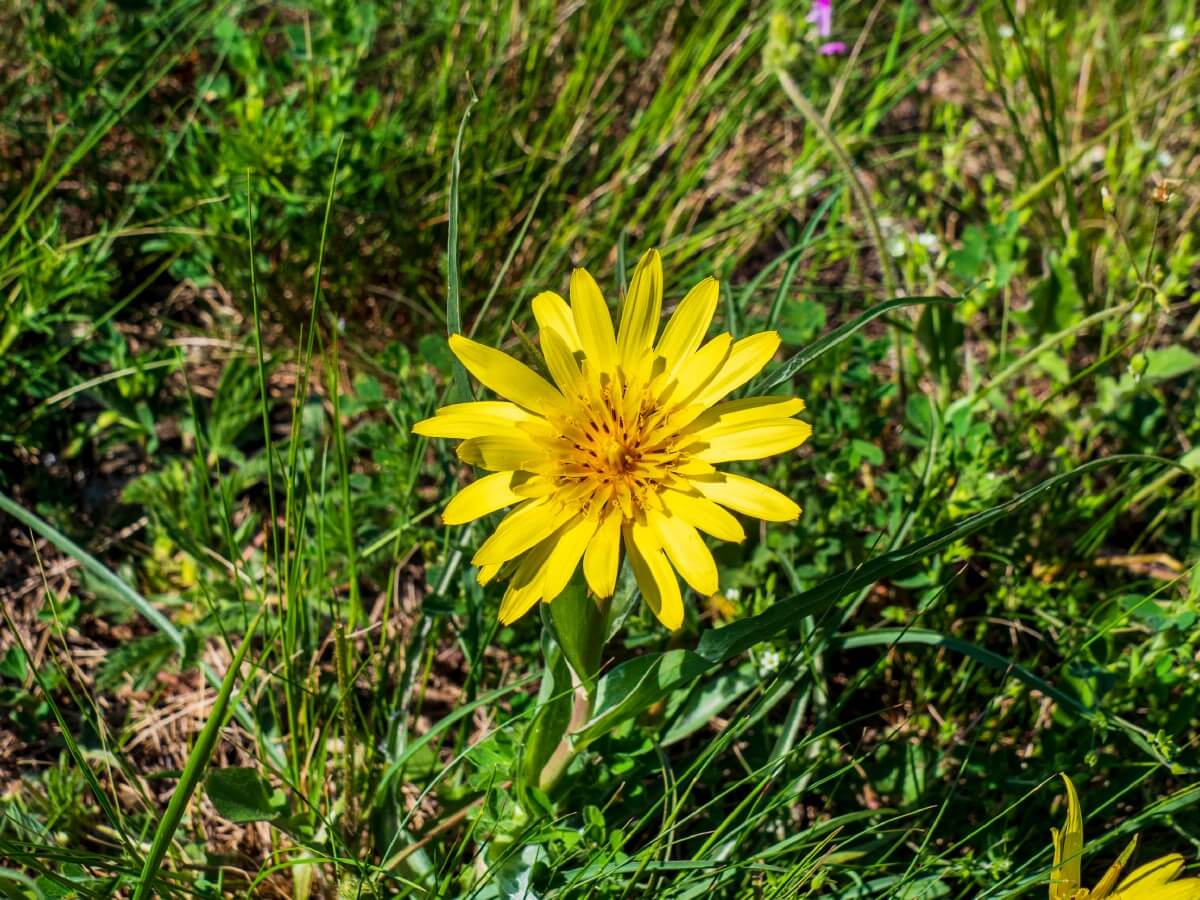
The lacy foliage and fine, delicate flowers are not appealing to deer. Goatsbeard is not an easy plant to eat, and so the opportunistic deer avoid it in favor of more accessible greens. These plants grow tall, making excellent border or background choices, or grown in groups a statement. Goatsbeard is a native North American plant and grows as an easy perennial in zones 3-7. We love the wispy, creamy-white ethereal flowers as much as the deer dislike them! Goatsbeard is a host plant for the Dusky Azure Butterfly and attracts quite a few other butterflies as well.
Foamflower (Tiarella)
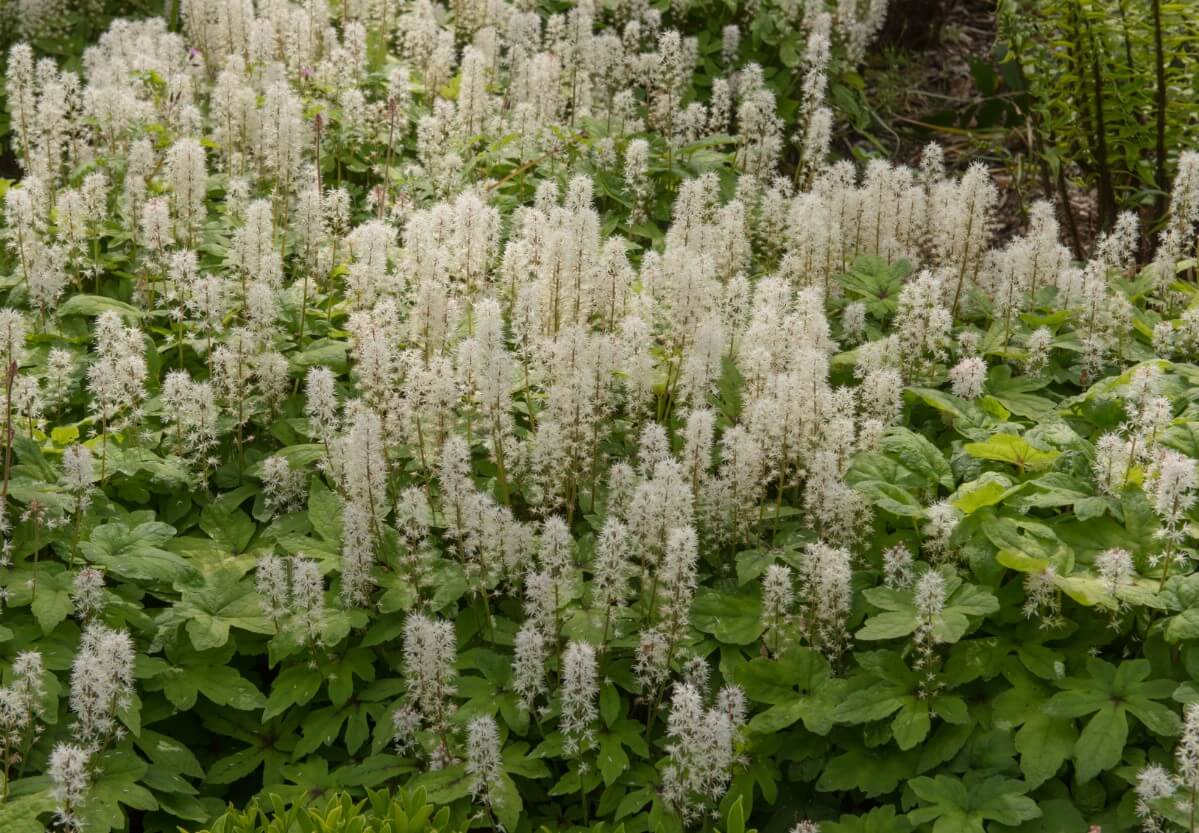
In addition to being disliked by deer, Foamflowers are a stunning garden flower. The spikes of small wispy white flowers are beautiful and beloved by native pollinators, like butterflies and bees. Deer avoid the Foamflower, most likely because it takes effort to eat and isn't that palatable. The foliage grows low to the ground for the deer to eat it easily.
Deer Resistant Perennial Herbs
Oregano (Origanum)
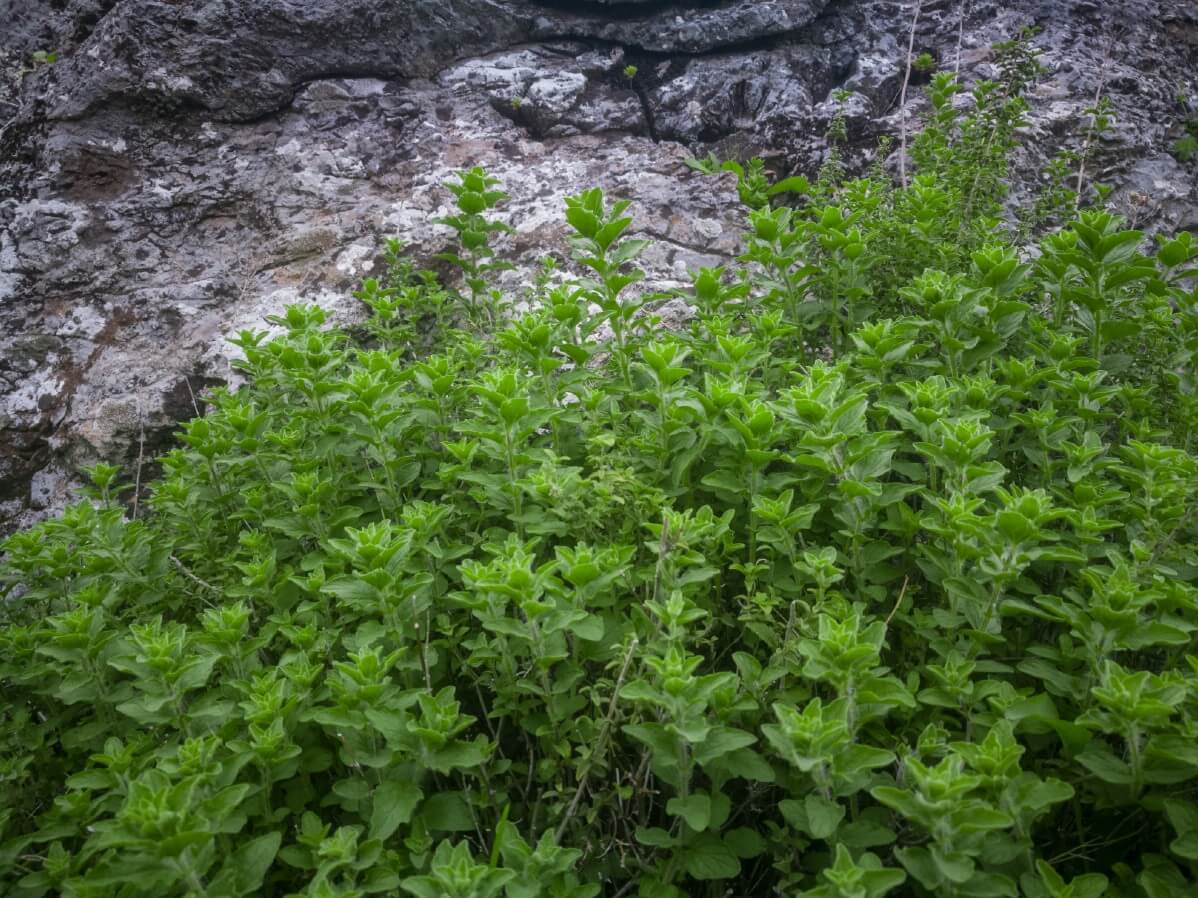
It isn't difficult to understand why deer dislike Oregano so much; it's the same reason we love it for culinary dishes. The deep, musky scent of Oregano is intoxicating for people and revolting to deer. Oregano is a low-growing perennial herb and, when planted en masse, makes a wonderfully fragrant ground cover. We recommend placing containers of Oregano throughout the flower garden to confuse the deer into thinking everything is smelly and bad-tasting. With over 40 varieties of Oregano to choose from, it's fun to mix them up and create a deeply scented haven free from deer damage.
Mint & Catmint
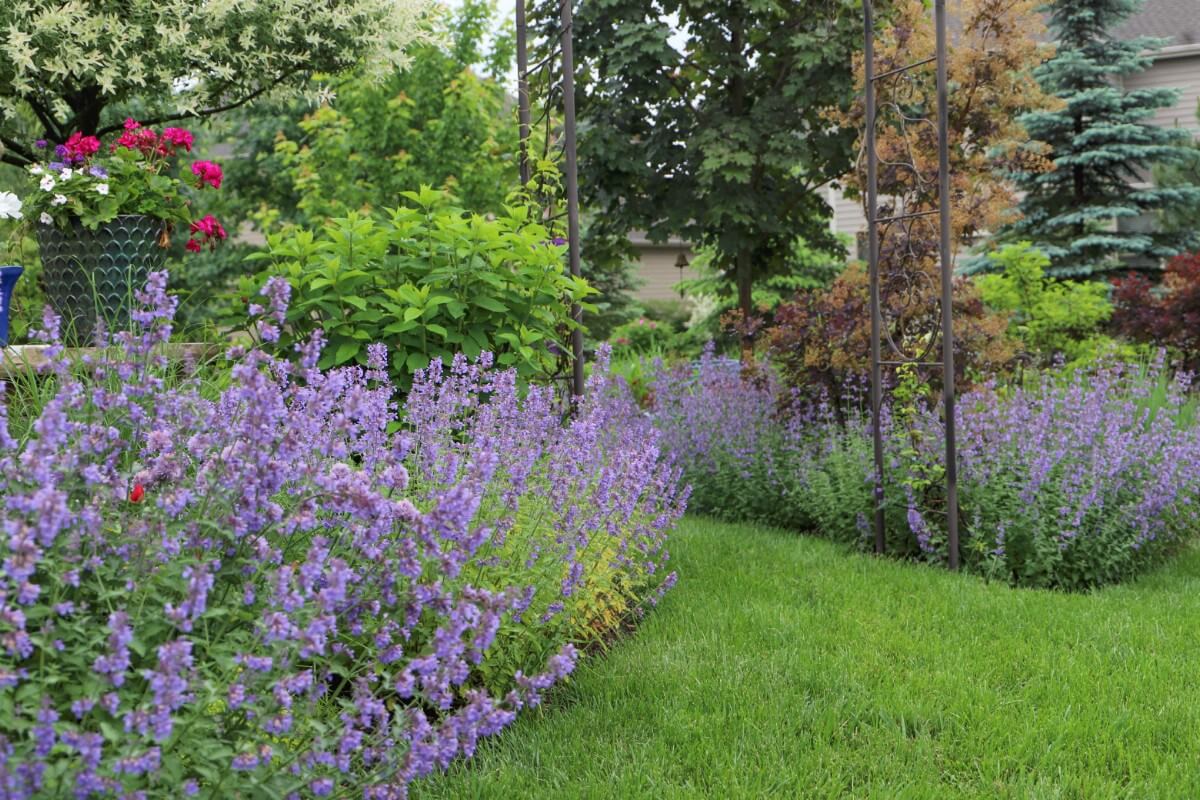
Deer detest that robust mint scent that we all know and love. All mints, including peppermint, wintermint, catmint, and spearmint, will keep deer at a distance. Be careful including these in your garden, though. Mints are vigorous growers and will take over the garden given the opportunity. The mint plant is as opportunistic as the deer! However, if you keep it in pots or containers around the garden, it will stay contained and work to keep the deer at bay. Having the mint in containers also means you can intersperse it easily throughout the garden.
Rosemary
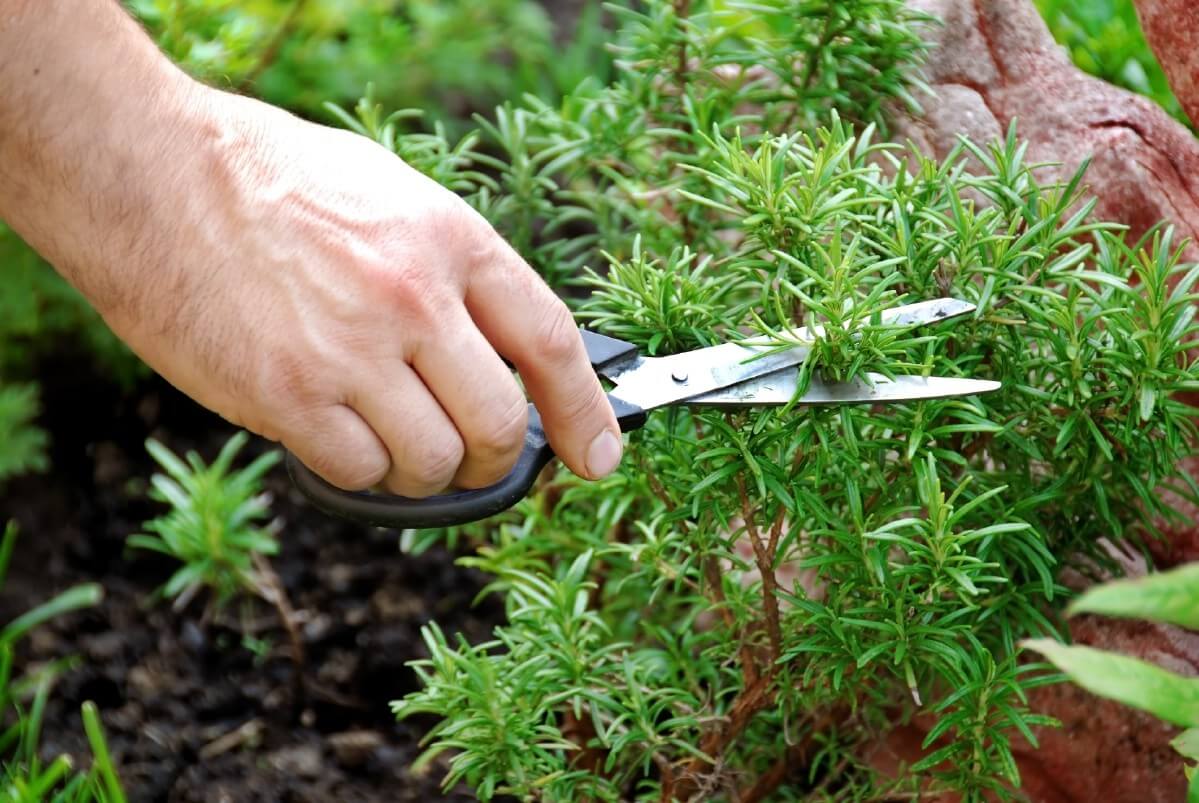
When it comes to super fragrant plants that deer hate, Rosemary is a top contender. The rich, woodsy smell of Rosemary emanates from the bush and sends the deer packing. Rosemary is an easy-growing perennial and excellent herb. We suggest scattering pots of Rosemary among other plants and flowers to ensure deer stay away from the garden.
Sage
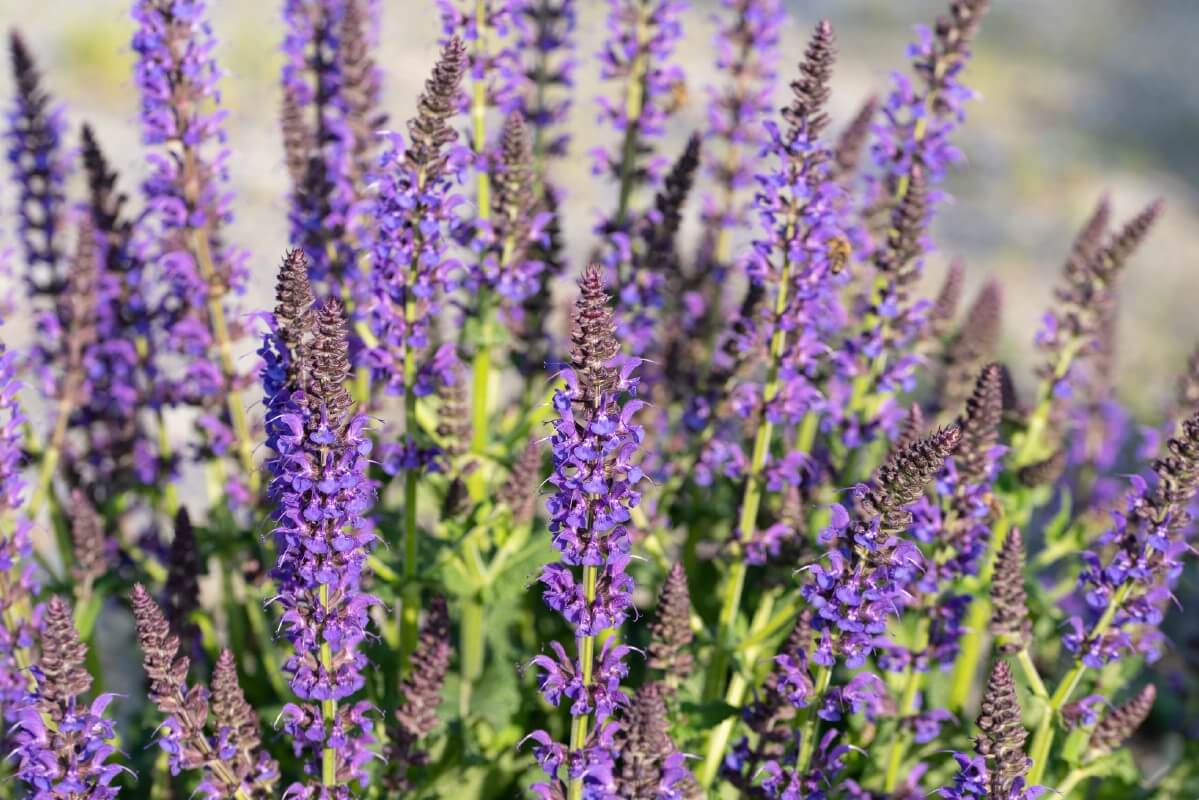
An outstanding culinary herb, sage is intensely disliked by deer. Both the leaves and flowers are rich with that earthy, musky mint-like scent that we love, yet the deer loathe. While we embrace the pungent smell, deer do not, so plant this liberally around the garden. It makes a perfect border around the garden to confuse the deer's sense of smell.
Thyme
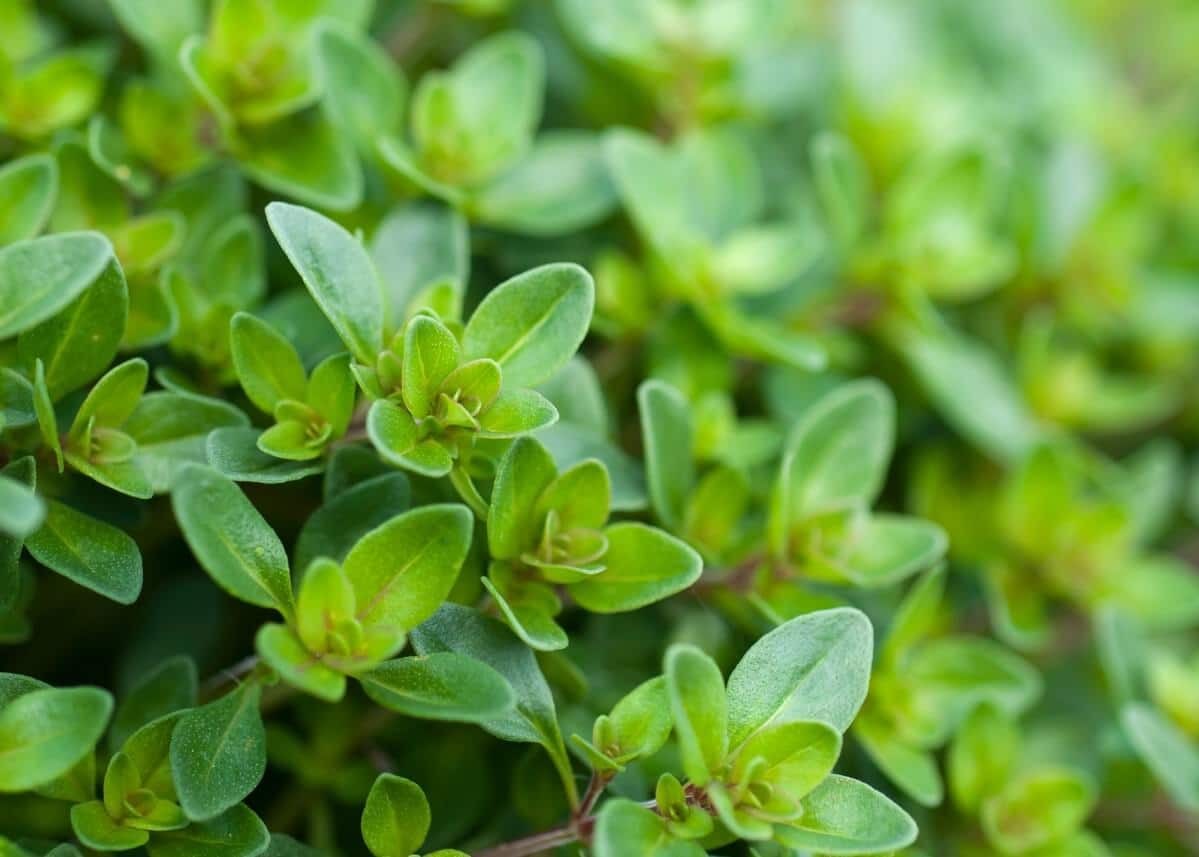
The slightly spicy fragrance of Thyme is a definite no for the deer. Include Thyme plants among low-growing flowers and plants to confuse any deer that might come investigating. Thyme grows effortlessly in the ground or containers and is a super versatile herb.
Deer Resistant Perennial Shrubs
Butterfly Bush (Buddleia)
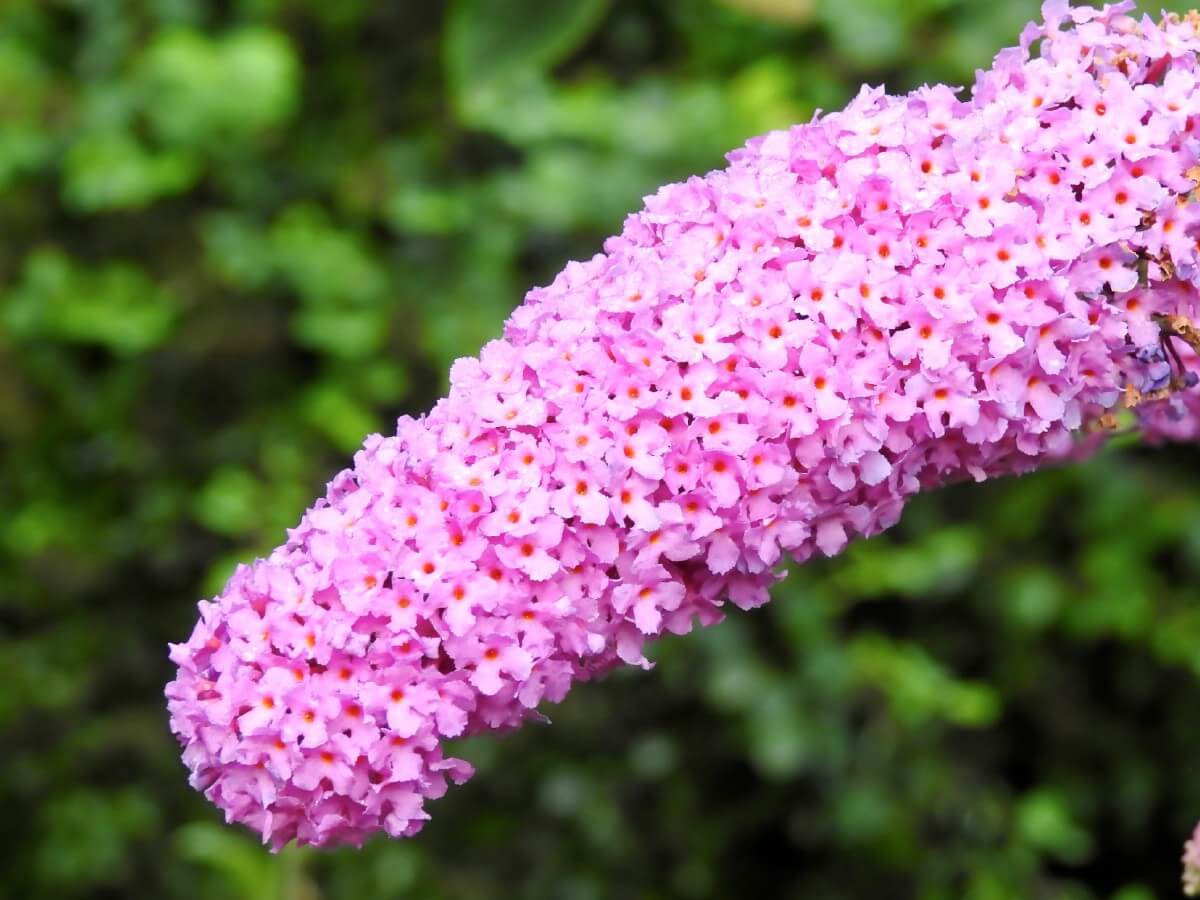
The honey-like scent of Butterfly Bush flowers is enough to keep the deer away. This perennial blooms a long time, too, so there is not much chance the deer will even give it a try. Plant Butterfly Bush with caution, as in some areas it has escaped cultivation and become invasive. In those areas, it would be great if deer actually did eat it! Butterflies love the Butterfly Bush, of course, and so do bees. Butterfly Bush is often confused with Butterfly Weed (further up the list under flowers); the Bush (Buddleia) is not native, while the Weed (Asclepias tuberosa) is a native in the milkweed family.
Lilac
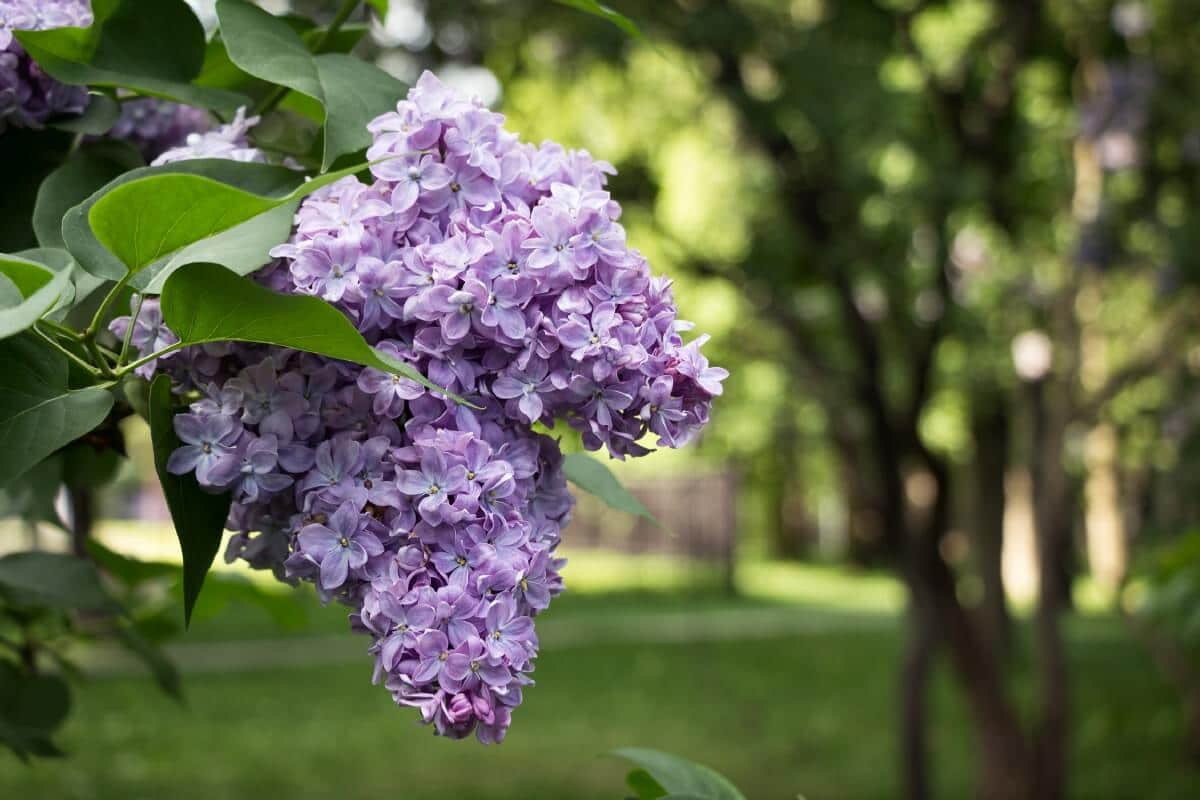
When it comes to fragrance, few shrubs beat out the Lilac. The sweet, heavy smell of lilac flowers is hated by deer and will keep them far away. Lilacs are also gorgeous and one of the best spring blooms with their brilliant colorfulness. Flowers last for about two weeks, but different varieties bloom at other times. Try planting several types for an extended lilac season and heavenly smelling backyard!
Boxwood (Buxus)
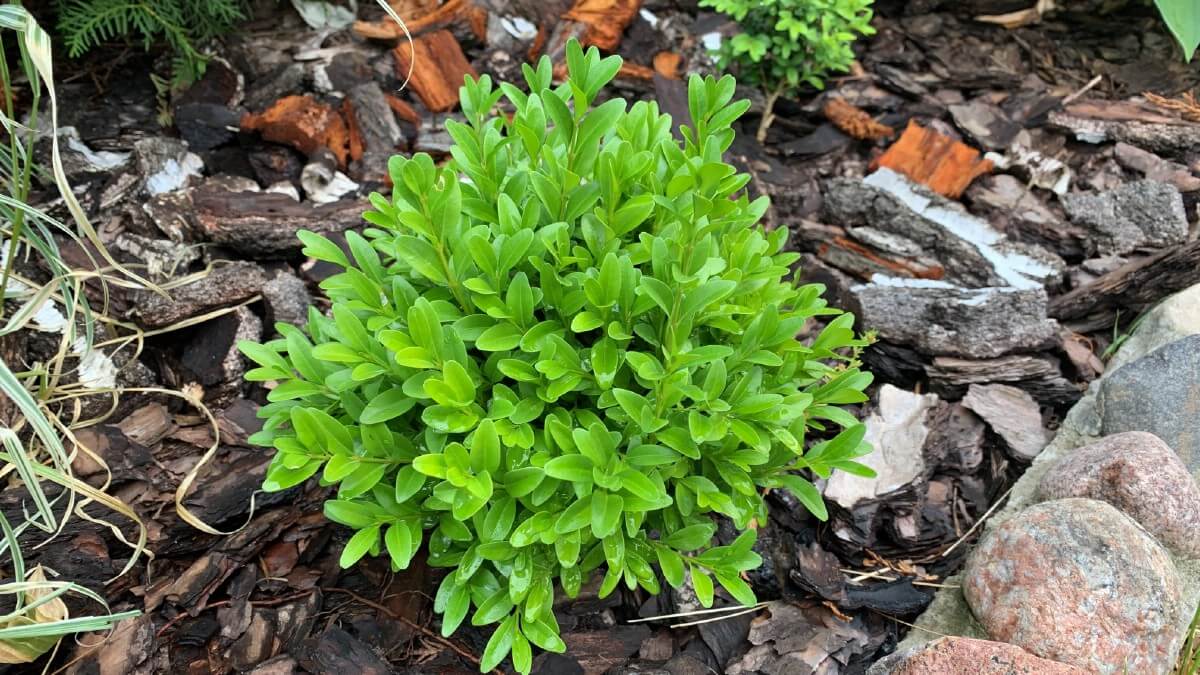
A top deer-resistant landscape shrub, Boxwood is versatile and easy to grow. Deer don't like the strongly fragranced leaves; be aware some people can't handle it either. It's also toxic, so even if they got beyond the smell, they wouldn't eat it. The scent isn't overpowering unless you're shoving your nose right into the plant, so we suggest you don't do that. Plant Boxwood as a border or fenceline; there are hundreds of varieties to choose from, and the deer don't like any of them.
Arrowwood Viburnum (Viburnum dentatum)
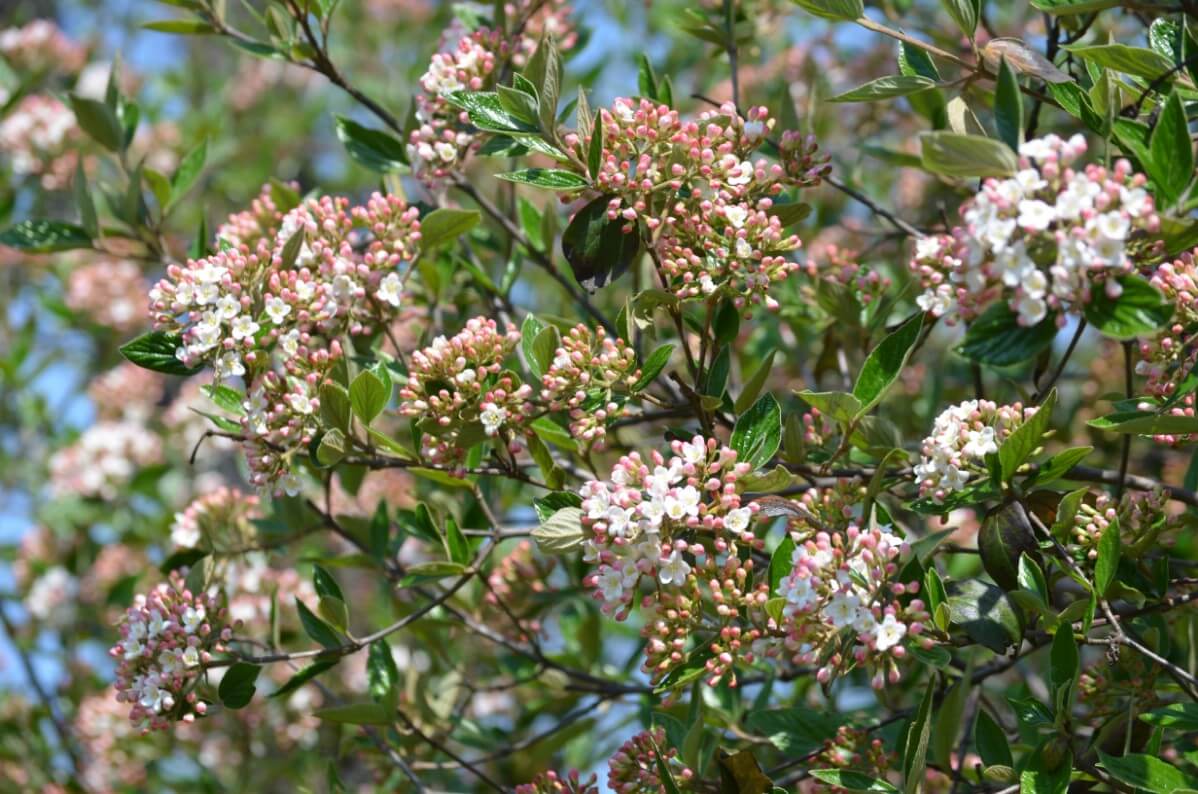
Deer don't like the oddly textured leaves or strongly fragrant flowers of Arrowhead Viburnum, but this plant doesn't wholly deter them. The great thing about Viburnum, though, is that even if deer snack on it a little, they rarely cause enough damage to hurt the plant seriously. The smell of Arrowhead Viburnum flowers is quite intense, so you may want to put this one away from the house or any place you frequent. It is perfect along property lines or meadow edges. The biggest reason to plant Viburnum is that it provides valuable winter berries for birds. And, you don't have to worry about the deer hurting it.
Salvia & Russian Sage
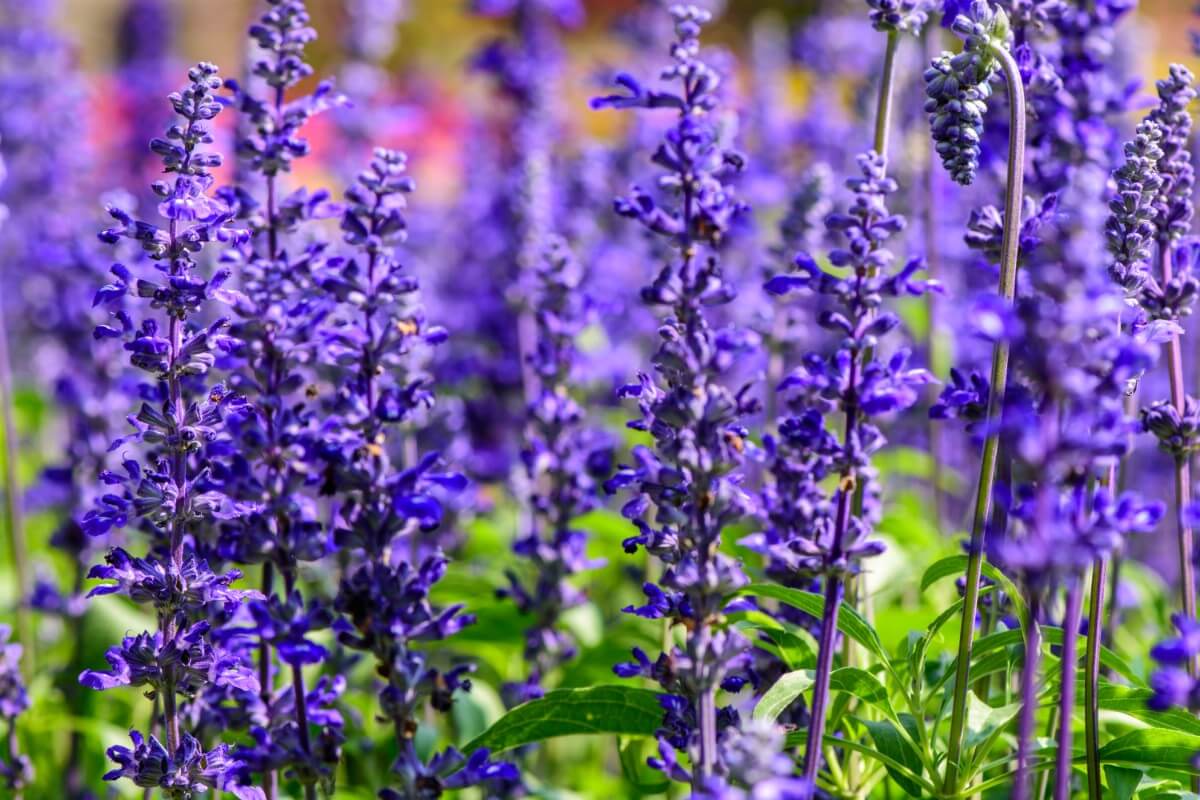
A member of the mint family, Salvia shrubs have a pungent smell which deer really don't like. Russian sage used to be considered a separate species, but now it is under the Salvia genus. There are tons of Salvia types to choose from, and they come in a wide range of colors. The most common types are purple, but you can also find red, orange, yellow, green, blue, and white Salvia. While Salvia deters deer, it attracts all the native pollinators, including butterflies, bees, and hummingbirds.
Shrub Roses (Rosa)
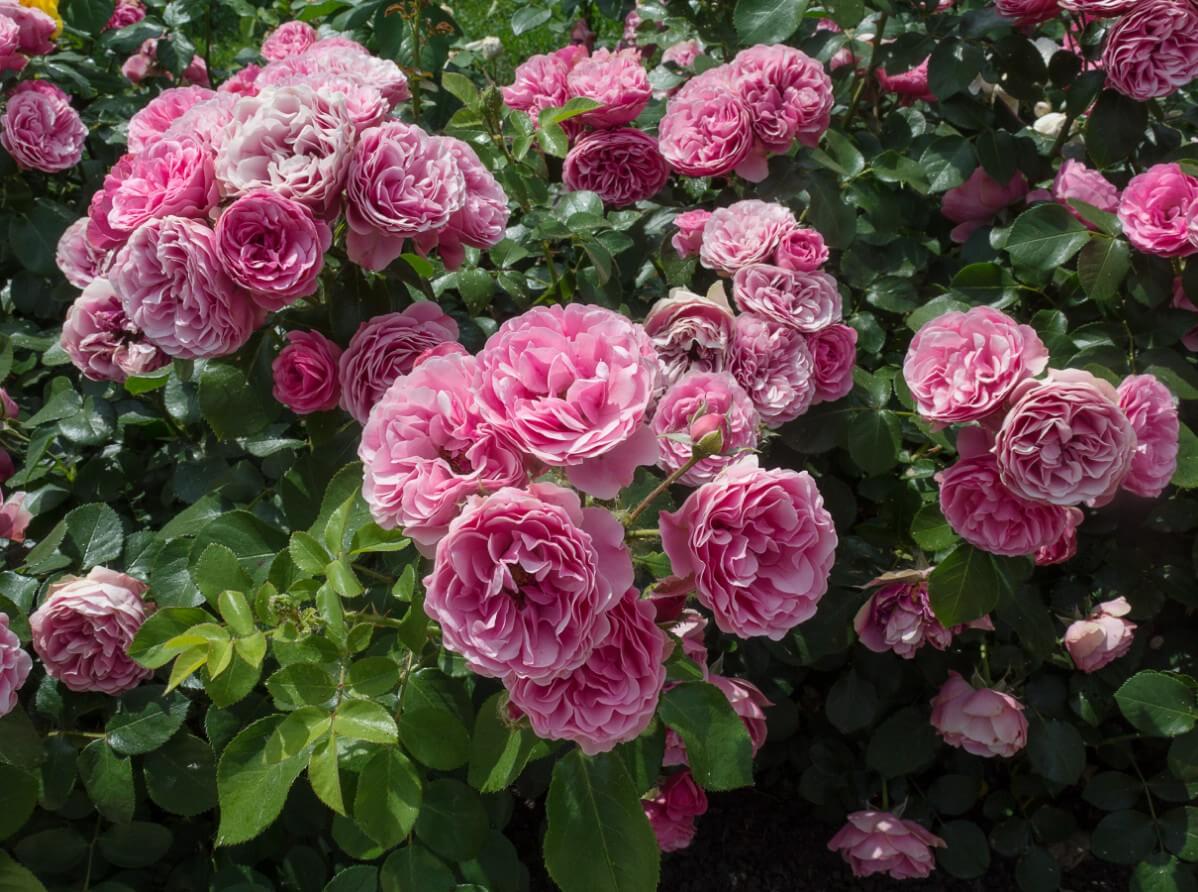
No deer like the prickly spines of rose bushes, so you never have to worry about deer damage when planting these. Use them as a natural fence or border, and keep the deer from entering your property. Just be sure to wear gloves when handling this plant, as humans and thorns aren't a good mix either. The flowers, though, are worth it. Shrub roses grow differently than garden roses, creating a bushier more shrub-like appearance.
Bayberry (Myrica pensylvanica)

This drought-resistant native perennial shrub puts out a fragrance that deer do not enjoy. Bayberry shrubs thrive in many harsh conditions, making them a versatile and valuable landscape choice. The uniquely colored silver berries are enjoyed by migrating birds in fall and provide excellent landscape value. Keep an eye on these bushes as they are known to spread opportunistically if allowed.
It's incredible how much variety is possible in the yard and garden, even when you're planting to prevent a pest. Don't forget, nothing is truly deer-proof when they're hungry, or there are large herds. In those cases, it's best to set up fencing to keep them out. Try these flowers, shrubs, and herbs first, though, to see how well they work to keep away your local deer. Plan to intermix the different flowers with the aromatic herbs, so the deer get confused. Extensive plantings of one flower are like putting out the smorgasbord for the deer family! We'd love to hear what plants and flowers you use to deter deer in your garden.


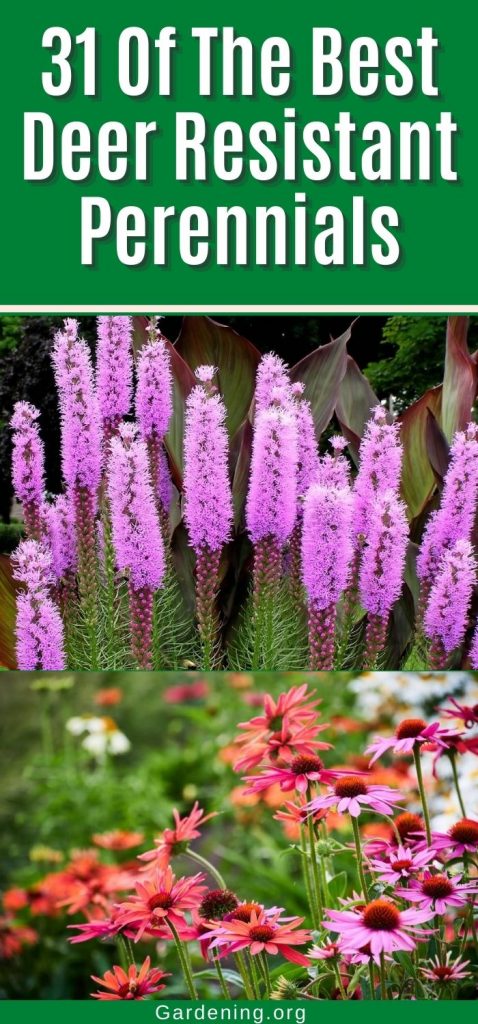
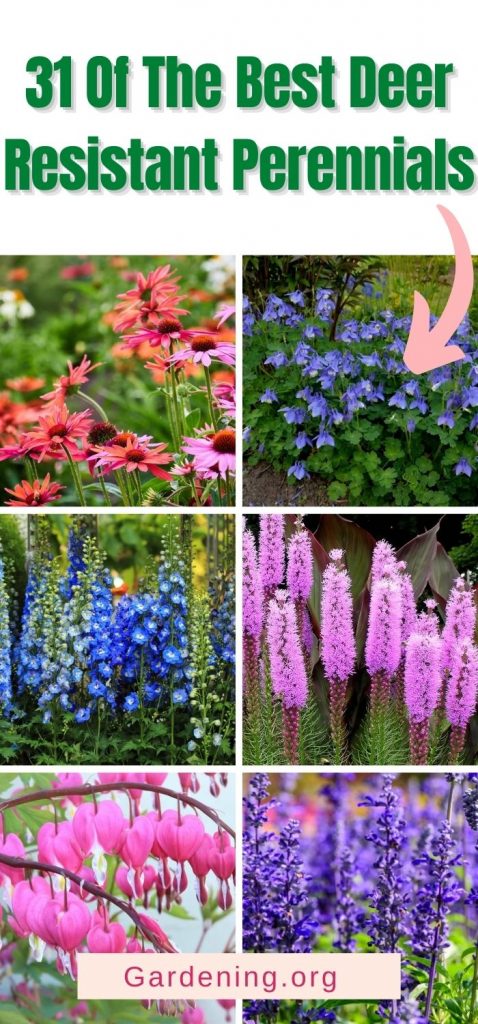
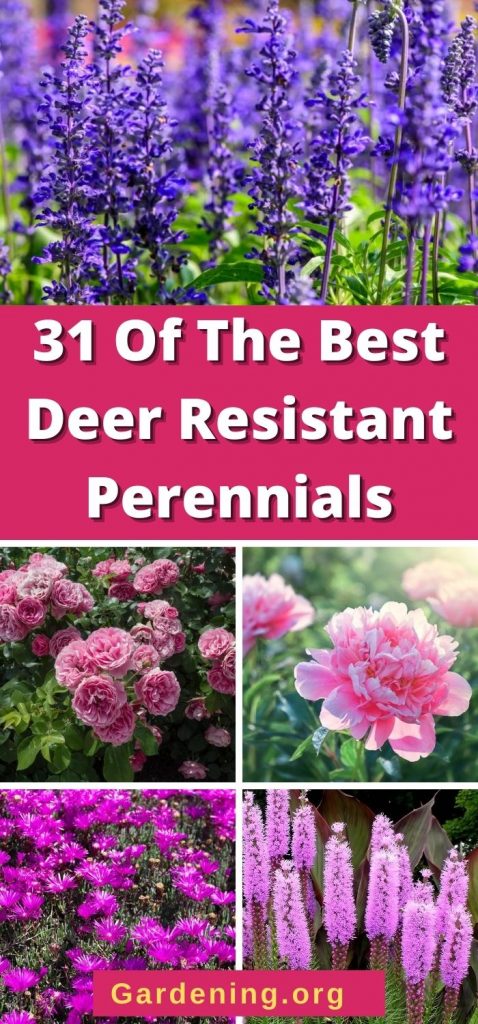
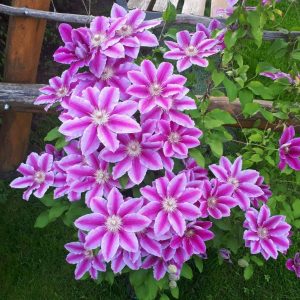
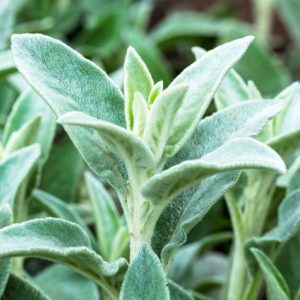
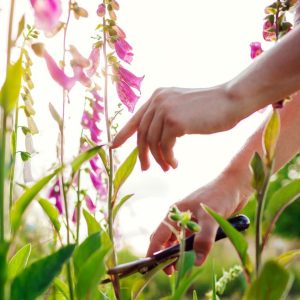
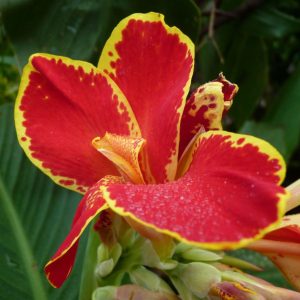
S. Wurtsbaugh
Lamium has worked for me. Generally plants with oddly colored leaves aren't deer's first choice, but they will eventually get around to tasting so deer repellant with egg in it and garlic powder are good to use on plants.
Theresa Forstrom
I love your writing.You have a comfortable style that is informative & fun to read. Living in the woods, I am always looking for more ammo in my on going fight for my own garden. Don't have all the plants you list but I do have most. All your recommendations work. Some nights I rip up Valarien root and drape it on my biggest hostas.
JRM
Lantana in zone 8 is a perennial, and the deer have never touched it.
Mary Ward
Thanks for that info!
Nancy
I love Latina plants they bloom all summer long. Deadheading is a must. I never realize the Latina is a perennial. Thanks for information.
Adrienne
Please take cone flower and peony off the deer resistant list. I live in the Blue Ridge mountains in Virginia. We are overrun with deer. They DO eat coneflower and for the last few year they have eaten my peony foliage right down to the ground. Their palates are adapting to new things. I have been amazed at some of the things they chomp on now. I have to spray constantly with Liquid Fence, which will keep them away.
Mary Ward
Thank you for your feedback. We won't remove them, because sometimes these things do seem to vary with location and feed availability. For instance, I do a lot with elderberries and deer here never eat them. Many growers say the same thing but there are growers who have bad deer problems, and it seems to be an issue of what other feed is available. And, we need to remember that "resistant" is just that--resistant, but not deer proof. Thank you for your input!
Bruce Shulman
I live 30 feet from a park containg hundred of ravenous deer. Three plants not mentioned which deer never eat are calla lilies, daffodils and oriental poppies. They probably also do not eat lily of the valley, which are highly poisonous. While deer will not eat cone flowers or black eyed Susan's after blooming, they do eat the leaves before flowers develop.
Mary Ward
Thank you for sharing. We picked some top contenders, but obviously we couldn't list them all--so thanks!
Janine Moss
You have the wrong plant pictured under 'Goatsbeard', some kind of a yellow daisy flower. Goatsbeard are creamy white sprays.